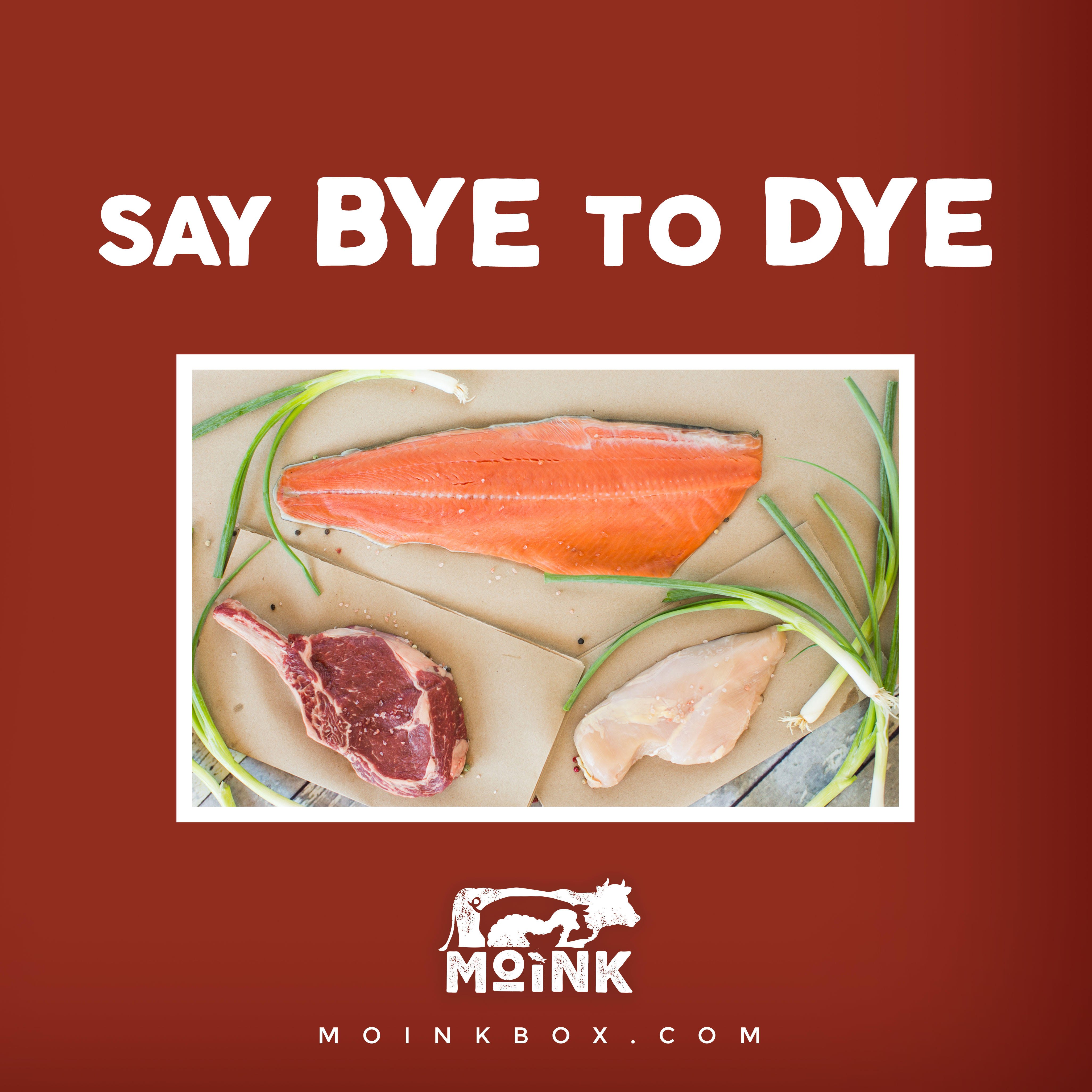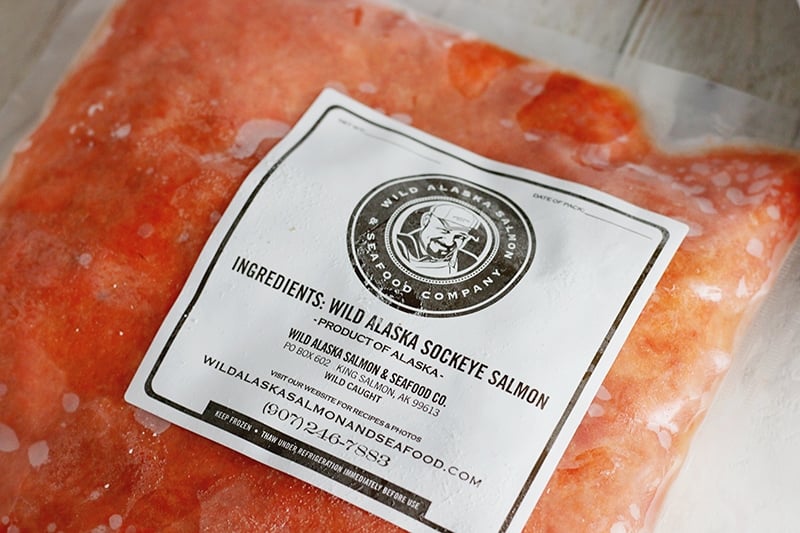Hi there, meat lovers! By now you’re probably starting to pick up on the fact that here at Moink, one of our core values is shedding light on the sketchy practices BIG Ag and corporate conglomerates like to employ to confuse consumers. The waters are murky out there when it comes to what’s what in the grocery store, and if we are going to clear them up, we have to start by understanding what is even happening.

Today, we’re dishing up the dirty details on the altered color of many supermarket meat products. Just like people, meat comes in all shapes, sizes and colors. So why is it that when you visit the grocery store meat aisle or counter, every single package of meat is uniformly bright red? If they’re being honest, a farmer, butcher or even the grocery store meat manager will tell you this simply isn’t natural.
Looks Can Be Deceiving: How to Avoid Food Dyes
Once meat is exposed to air, it gradually turns from red to a not-so-festive brown or grey color. For all of you science nerds, this process is called oxidation. While grocery stores put new meat out each day, some packages sit on the shelves for many days. To keep the meat looking appetizing, they treat it with Carbon Monoxide. That’s right, the gas that is emitted from car exhaust pipes, lawn mowers and charcoal grills. Although this Carbon Monoxide is tasteless and odorless, it’s highly poisonous, and even minor inhalation can lead to symptoms like fatigue and headaches. But it’s okay to put it in our food?
It’s estimated that as much as 70 percent of supermarket meat has been treated with Carbon Monoxide, which keeps it looking artificially fresh, even if it’s spoiled, for up to a full year! We don’t know about you, but the idea of meat being altered to look like it’s one day old when it’s actually been sitting in a display case under fluorescent lights for days on end, well that is just weird.
It’s not just the bright red beef case you need to be wary of when doing your grocery shopping. Some companies use a combo of Blue 1, Yellow 5, Yellow 6 and Red 40 dyes to keep their salmon filets looking bright pink. Farm-raised salmon can be naturally white, so they’re given a chemical feed to alter the color of their flesh to the same bright pink hue of wild-caught salmon. Store-bought pork products like bacon and ham are treated with a chemical called Sodium Nitrite to change the colors.

Photo by Sunny Sweet Days
Many of these ingredients are outlawed in Japan, Canada and the European countries, but the U.S. Food & Drug Association still lets them fly. The big meat companies claim these shady coloring practices are harmless, and necessary to keep meat affordable and to prevent waste. They also say we can look for other signs that are meat has spoiled, like a bad odor, slime or bulging packaging. Are you feeling grossed out (and dare we say a little angry) yet?
True Colors
At Moink, our meats are NEVER doctored to alter color. The look and flavor of our products stand on their own, and what you see is what you get!
We only partner with family farmers who share our commitment to quality and transparency to bring you humanely-raised, ethically-sourced beef, chicken, pork, lamb and salmon that naturally tastes oh so good. And Moink products contain NO antibiotics, growth hormones, GMOs, solutions, added sugars, nitrites and chemicals found in most supermarket meat.
If you’re ready to opt out of sketchy grocery store meat products and the deceptive companies standing behind them, there is another way. Try a Moink Box today.
Ready to join the Moink Moovement and help us fight for the family farm?

Quite frankly, I take issue With some of the statement made in your article. Carbon monoxide is a gas, not a dye. And while it is lethal if breathed in high concentrations, it poses absolutely no danger when used to keep meat pink. The gas does not remain in the meat. It’s like blowing out a candle. The puff of air you blow across the candle to blow it out does not remain with the candle. It just briefly changes the oxygen content of the air surrounding the surface of the wick. That’s what carbon monoxide does with the surface of the meat.
Second your suggestion the grocery stores are “shady” or “deceptive” is actually shady and deceptive. While there may be cases of dishonest vendors in any business, including organic vendors, the vast majority go to great lengths to ensure product safety.
Most grocery stores sell USDA graded meat. The process of earning the USDA stamp is rigorous and grocery store butcher shops are inspected on a regular basis. The process of gas treating meat has been studied thoroughly and has been determined to be safe by hundred peer-reviewed scientific studies. The underhanded implication that grocery stores are deliberately poisoning their customers is dishonest fear no getting.
If you feel you truly have a superior product, then advertise the qualities of your product and let it stand on its own merit. Don’t stoop to adolescent slander and smearing if your completion.
Preach 🙌🏻 I was thinking the same thing. Super terrible look for a company to tweak the truth to get a fear response to promote their own business.